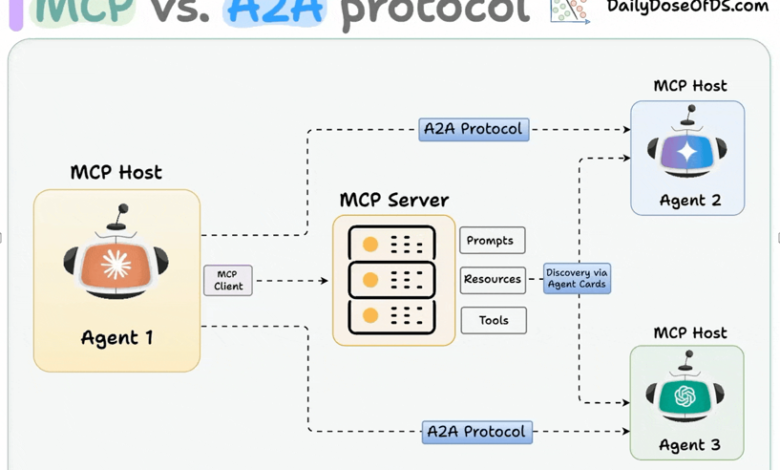How AI Orchestration and Intelligent Systems Are Reshaping Enterprises

Artificial Intelligence (AI) has moved beyond experimental pilots and now plays a central role in enterprise transformation. From finance to healthcare, organizations are building interconnected AI ecosystems that automate processes, enhance decision-making, and unlock new levels of efficiency. Two critical innovations driving this shift are the A2A protocol and the concept of a center of intelligence, both of which enable enterprises to move from isolated automation to scalable, orchestrated intelligence.
The Growing Need for AI Orchestration
The enterprise AI landscape is often fragmented. Companies deploy chatbots, automation tools, and predictive analytics models, but without proper integration, these solutions remain siloed. This creates inefficiencies, slows adoption, and limits impact.
What enterprises need is not just standalone AI agents, but a connected ecosystem where systems can interact, share knowledge, and act in unison. AI orchestration provides this capability—making sure that every model, tool, and agent works together toward enterprise-wide outcomes.
Understanding the A2A Protocol
One of the enablers of enterprise AI orchestration is the A2A protocol. Short for Agent-to-Agent Protocol, A2A is designed to ensure seamless communication and collaboration between AI agents.
How the A2A Protocol Works
- Standardized Communication: It creates a common language for AI agents to share data, context, and decisions.
- Cross-Agent Collaboration: Multiple agents can cooperate on complex workflows—such as contract validation, risk analysis, or customer support—without manual intervention.
- Scalability: By allowing agents to connect dynamically, enterprises can expand their AI ecosystem without redesigning from scratch.
Why the A2A Protocol Matters for Enterprises
The protocol is vital because enterprises rarely rely on a single AI solution. Instead, they need multiple specialized agents working across different functions. For instance, a finance team may use one agent for compliance checks and another for automated reporting. Without a protocol like A2A, these agents risk working in isolation, reducing overall effectiveness.
With A2A in place, organizations can:
- Reduce redundancies
- Improve decision accuracy
- Enable faster execution of cross-functional processes
See also: Is Lip Sync AI the Future of Virtual Influencers and Avatars?
The Role of the Center of Intelligence
While A2A connects agents, enterprises also need a system that acts as the “brain” of operations. This is where the center of intelligence comes in.
What Is a Center of Intelligence?
A center of intelligence is a unifying platform that integrates data sources, knowledge bases, and AI agents into a single orchestrated system. It doesn’t just store information—it actively interprets, routes, and leverages insights to guide decision-making across the organization.
Key Functions of a Center of Intelligence
- Data Unification – Aggregates structured and unstructured data from multiple sources.
- Knowledge Curation – Builds an enterprise knowledge base to provide context for AI-driven processes.
- Decision Orchestration – Directs AI agents using rules, context, and real-time inputs.
- Feedback Integration – Continuously learns from human input and outcomes to improve system accuracy.
Enterprise Benefits of a Center of Intelligence
- Efficiency Gains: Streamlined workflows reduce manual effort.
- Consistency: Uniform decision-making across teams and geographies.
- Scalability: Easy integration of new agents, tools, and business functions.
- Transparency: Improved governance and auditability of AI-driven decisions.
A2A Protocol and Center of Intelligence: The Perfect Pair
Enterprises achieve maximum value when the A2A protocol and a center of intelligence work together.
- The A2A protocol enables interoperability between agents.
- The center of intelligence ensures these agents work in alignment with enterprise goals.
Together, they form the backbone of enterprise AI orchestration, allowing organizations to evolve from fragmented automation into a truly connected intelligence network.
Real-World Applications
Finance and Compliance
- Automated contract validation using AI agents ensures compliance with internal policies and regulatory standards.
- A2A-enabled agents collaborate with the center of intelligence to flag risks, extract clauses, and generate compliance reports.
Customer Experience
- Multi-agent systems handle customer queries, escalate complex cases, and provide personalized responses.
- Orchestration ensures that insights from sales, support, and marketing are shared seamlessly.
Supply Chain Optimization
- AI agents forecast demand, manage supplier risk, and automate procurement tasks.
- The center of intelligence coordinates agent outputs to optimize inventory and logistics decisions.
Preparing for the Future of Enterprise AI
As enterprises scale AI adoption, the ability to orchestrate agents and unify intelligence will determine success. The A2A protocol ensures interoperability, while the center of intelligence drives coordinated decision-making. Organizations that embrace both will move beyond automation to achieve true enterprise-wide intelligence.
Conclusion
The next phase of enterprise AI is not about deploying isolated tools—it’s about orchestrating intelligence. By leveraging the A2A protocol for seamless agent collaboration and establishing a center of intelligence for unified decision-making, organizations can unlock transformative efficiency, agility, and innovation.



